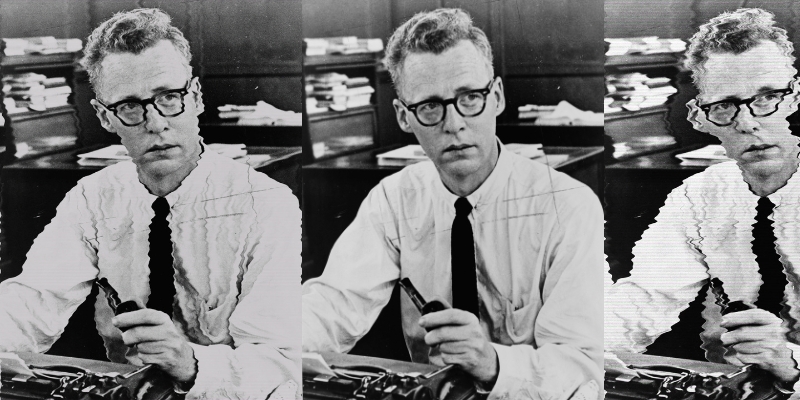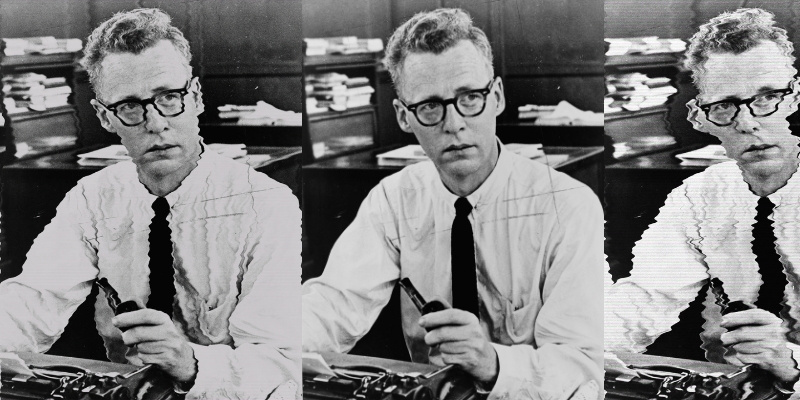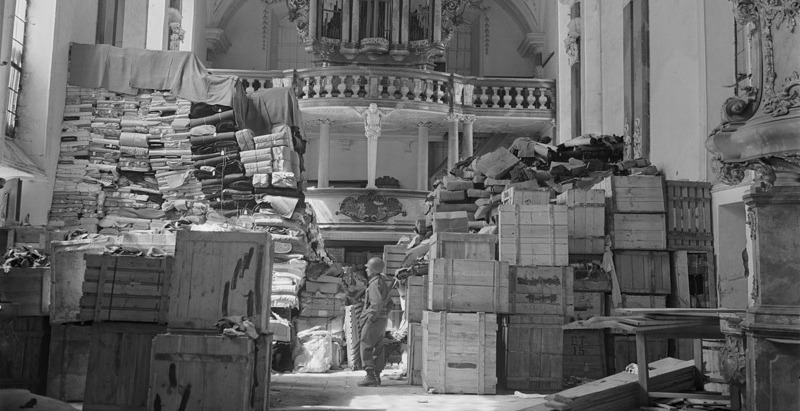The echoes of World War II still reverberate through history, leaving behind more than just physical scars. A shadow lingers, cast by the systematic theft and looting that accompanied the conflict. Countless treasures, artifacts, and literary works – testaments to civilizations past and present – were ripped from their rightful owners and vanished into the maw of wartime chaos. Their stories, often silenced, offer a chilling glimpse into the darkest side of human greed and the enduring power of cultural destruction. Now, with meticulous investigation and a growing awareness of the human cost of these crimes, a quiet revolution is underway – a quest to trace the stolen objects, reclaim their narratives, and ultimately, restore a stolen heritage.
Plunder and Legacy: Tracing the Ghosts of WWII Looted Art

The war’s destructive reach extends far beyond immediate casualties and territorial disputes. The systematic plunder of art and cultural treasures by the Nazis during World War II left an indelible mark on the global art world, perpetuating a legacy of loss, legal complexities, and moral dilemmas that continue to resonate today.

The Emotional Toll: Exploring the Profound Personal Loss Felt by Families and Communities Stripped of Their Cultural Heritage
Objects hold an irreplaceable emotional value that transcends their monetary worth. For families and communities, they serve as tangible links to their past, preserving memories, stories, and a sense of identity. The theft of these objects during wartime inflicts a profound and lasting wound, severing these vital connections and leaving a void that cannot be easily filled.
Consider the case of the Meador family, whose patriarch, U.S. Army Lieutenant Joe T. Meador, looted priceless church artifacts from Quedlinburg, Germany, during the war. While the family ultimately profited from the sale of these stolen goods, the ethical implications of their actions and the enduring impact on the German community remain a source of controversy and reflection.

The Legal Labyrinth: Navigating the Complexities of International Law, Statutes of Limitations, and Ownership Disputes in the Quest for Repatriation
The pursuit of repatriation for looted art is fraught with legal and logistical challenges. International law, treaty obligations, and national legislation often intersect in complex ways, creating ambiguities and hurdles for victims seeking justice.
Statutes of limitations, which set time limits for filing legal claims, further complicate the process, making it difficult to bring perpetrators to account decades after the crimes were committed. Compounding these challenges are ownership disputes, where multiple claimants may emerge, each arguing a rightful claim to the stolen objects.

The Shadows of War: From Battlefield Booty to Black Markets
A History of Plunder: Examining the Long Tradition of Looting in Warfare, Tracing Its Roots Back to Ancient Conflicts and Its Evolution Through History

Plunder has been an unfortunately recurring element of warfare throughout history, dating back to ancient civilizations. From the Roman legions to the Vikings, soldiers often viewed the acquisition of spoils as a legitimate reward for their service, justifying the appropriation of enemy property.
While the motivations and justifications for looting have evolved over time, the practice itself has persisted, reflecting a darker side of human nature that emerges in the context of conflict.

Nazi Exploitation: Delving into the Systematic Plunder of Art and Cultural Treasures by the Nazis During World War II
The Nazi regime’s systematic looting of art and cultural treasures represents one of the most egregious examples of wartime plunder in history. Driven by a twisted ideology of racial superiority and a desire to amass a collection of “masterpieces” for their Führer, the Nazis targeted museums, private collections, and synagogues across Europe, stripping them of their irreplaceable cultural heritage.
The scale of this operation was staggering, with an estimated 500,000 to 1 million artworks stolen. This plunder not only robbed museums and individuals of their treasures but also inflicted a profound cultural wound on the nations and communities from which these objects were taken.

The Long Road to Restitution: From Thrift Store Discoveries to High-Profile Cases
Unlikely discoveries of looted art in unexpected places have raised awareness and fueled the fight for repatriation. Organizations, researchers, and individuals have dedicated themselves to identifying and returning looted art, despite the challenges of proving ownership and provenance.
One such discovery was made by a Texas antiques dealer in 2018, who found a 2,000-year-old Roman bust on sale in her local goodwill store for $34.99. Experts later determined that the 52-pound marble head had disappeared from Germany after Allied bombing in World War II, likely stolen by an American G.I. For an undisclosed finder’s fee, the dealer returned the bust to Germany.
Another example is the case of a man who paid less than $80 for what turned out to be an original drawing by famed Austrian artist Egon Schiele, worth an estimated $200,000. Unlike the bust, with an established provenance in Germany, there is no way to know whether the Schiele drawing was stolen or brought to the U.S. legally.
Unlikely Discoveries
These discoveries highlight the complexities and nuances of looted art, as well as the challenges of returning such items to their rightful owners. The case of the Roman bust and the Schiele drawing demonstrate the importance of thorough research and provenance in identifying and returning looted art.
Other examples include the Meador family, who sold some of the stolen goods to a German art repatriation organization for $3 million in 1990. The family had no problem with uncomfortable questions, and the sale of the items drew attention to the issue of looted art.
The Power of Advocacy
Organizations, researchers, and individuals have dedicated themselves to identifying and returning looted art. The Association of Art Museum Directors, for example, has developed a comprehensive set of guidelines for museums to follow in handling looted art.
The International Foundation for Art Research has also played a significant role in identifying and returning looted art. The organization has developed a database of looted art and provides research and advocacy services to museums and collectors.
The importance of international cooperation in returning looted art cannot be overstated. The United States, Germany, and other countries have established agreements and protocols for the return of looted art, and the European Union has implemented laws and regulations to prevent the trade in looted art.
The challenges of returning looted art are significant, however. Proving ownership and provenance can be difficult, and the issue of financial compensation can be complex. Despite these challenges, organizations and individuals continue to work towards returning looted art to its rightful owners.
The Future of Repatriation: Reconciliation, Remembrance, and the Quest for Justice
Restoring cultural heritage is a critical aspect of repatriation, as it allows communities to rebuild and preserve their cultural heritage. Museums and cultural institutions play a significant role in promoting understanding and reconciliation through exhibitions, educational programs, and community engagement.
The importance of ethical considerations in repatriation cannot be overstated. The rights of current owners, the potential for financial gain, and the lasting impact of historical injustices all require careful consideration.
Restoring Cultural Heritage
Restoring cultural heritage is a complex and multifaceted process that requires the involvement of museums, cultural institutions, and local communities. The restoration of cultural heritage can take many forms, including the return of looted art, the preservation of cultural artifacts, and the development of cultural programs and exhibitions.
The importance of community engagement in restoring cultural heritage cannot be overstated. Local communities must be involved in the decision-making process and must have a say in how their cultural heritage is preserved and presented.
Ethical Considerations
Ethical considerations are a critical aspect of repatriation, as they involve complex questions of ownership, financial compensation, and historical justice. The rights of current owners, the potential for financial gain, and the lasting impact of historical injustices all require careful consideration.
The importance of transparency and accountability in repatriation cannot be overstated. Museums, collectors, and other stakeholders must be transparent about their processes and must be accountable for their actions.
- Museums and cultural institutions must prioritize transparency and accountability in their repatriation efforts.
- Current owners must be held accountable for their actions and must be willing to return looted art to its rightful owners.
- The financial compensation for looted art must be fair and reasonable, and must take into account the historical context and the cultural significance of the item.
Conclusion
In conclusion, the plunder of cultural treasures during World War II remains a stark reminder of the devastating consequences of war. As we traced the path of stolen and looted objects, it became clear that the pillage was not only a product of wartime chaos but also a calculated effort to erase cultural identities and reshape the narrative of history. The systematic looting of art, artifacts, and cultural relics by the Nazis and other warring parties resulted in the displacement of millions of objects, many of which remain lost or hidden to this day.
The significance of this topic cannot be overstated. The plunder of cultural treasures is not merely a historical footnote; it has profound implications for our understanding of identity, cultural heritage, and the human experience. As we move forward, it is essential that we acknowledge the past, work towards restitution, and prioritize the preservation and protection of cultural artifacts. This is not only a moral obligation but also a necessary step towards reconciliation and healing. As the last surviving victims of World War II fade away, it is our responsibility to carry the torch of memory and safeguard the cultural treasures that define our shared humanity.
As we reflect on the legacy of World War II’s stolen and looted objects, we are reminded that the true cost of war extends far beyond the battlefield. It is a sobering reminder that the cultural heritage of a nation is not just a collection of objects but the very fabric of its identity. As we strive to build a more just and equitable world, let us not forget the lessons of the past. Let us work towards a future where cultural treasures are cherished, protected, and preserved for generations to come, lest we forget the devastating consequences of forgetting.
